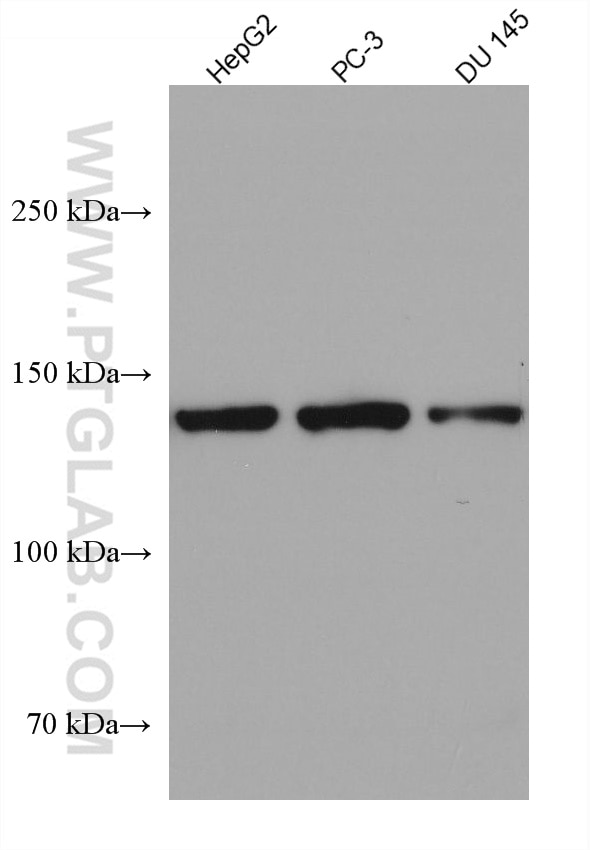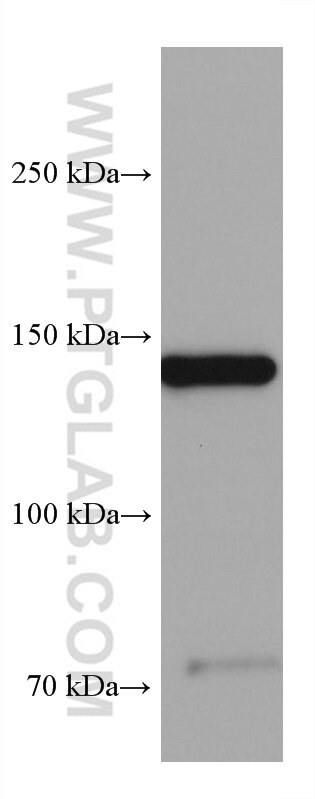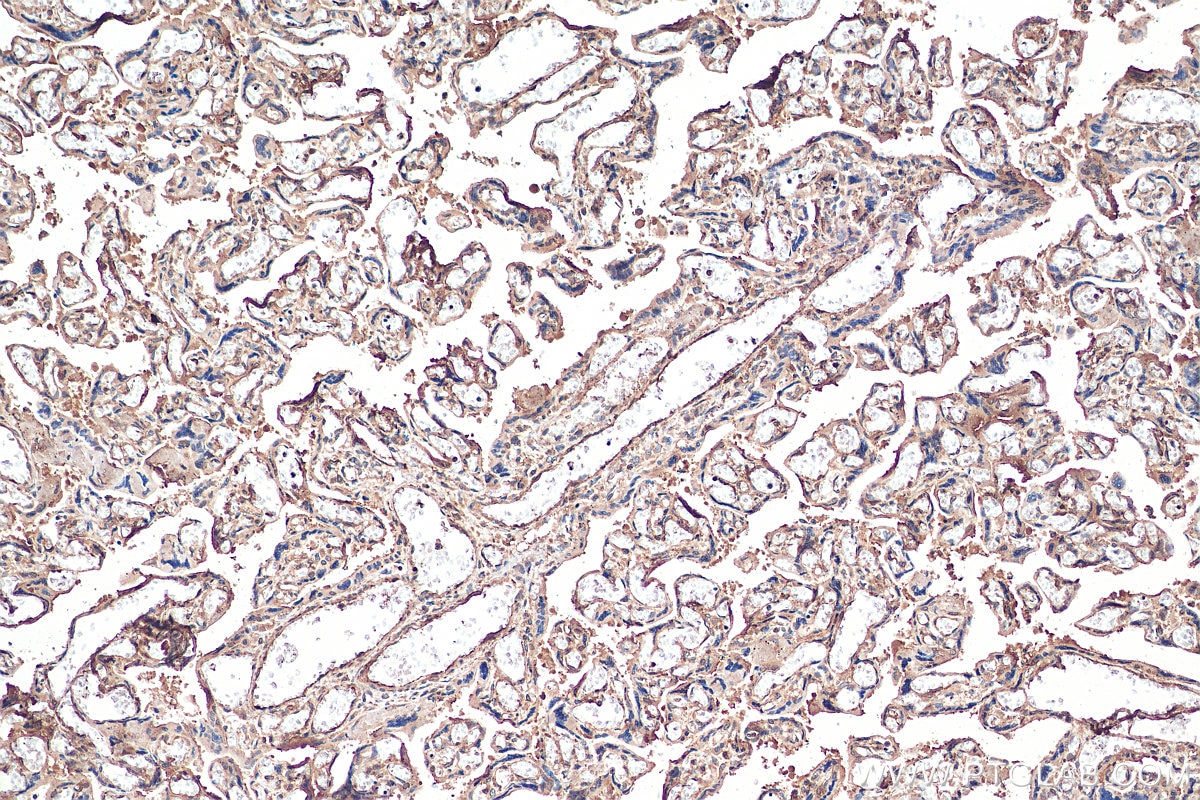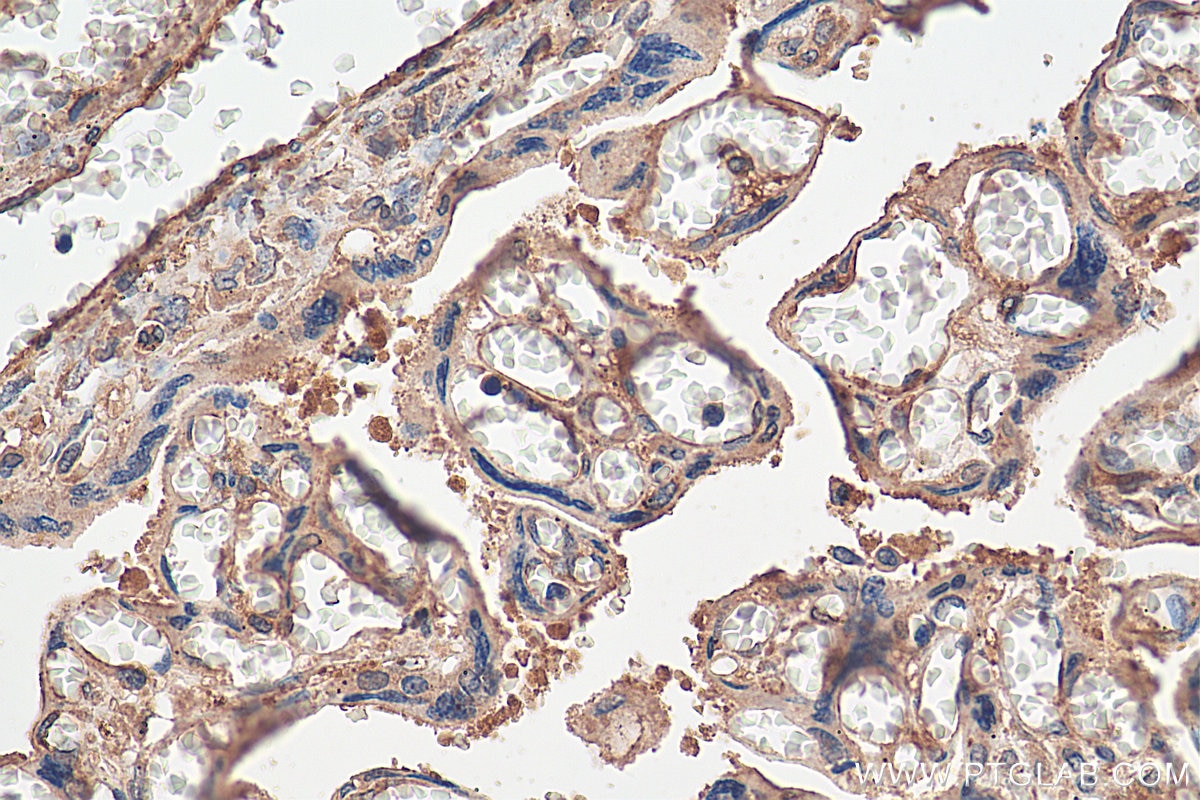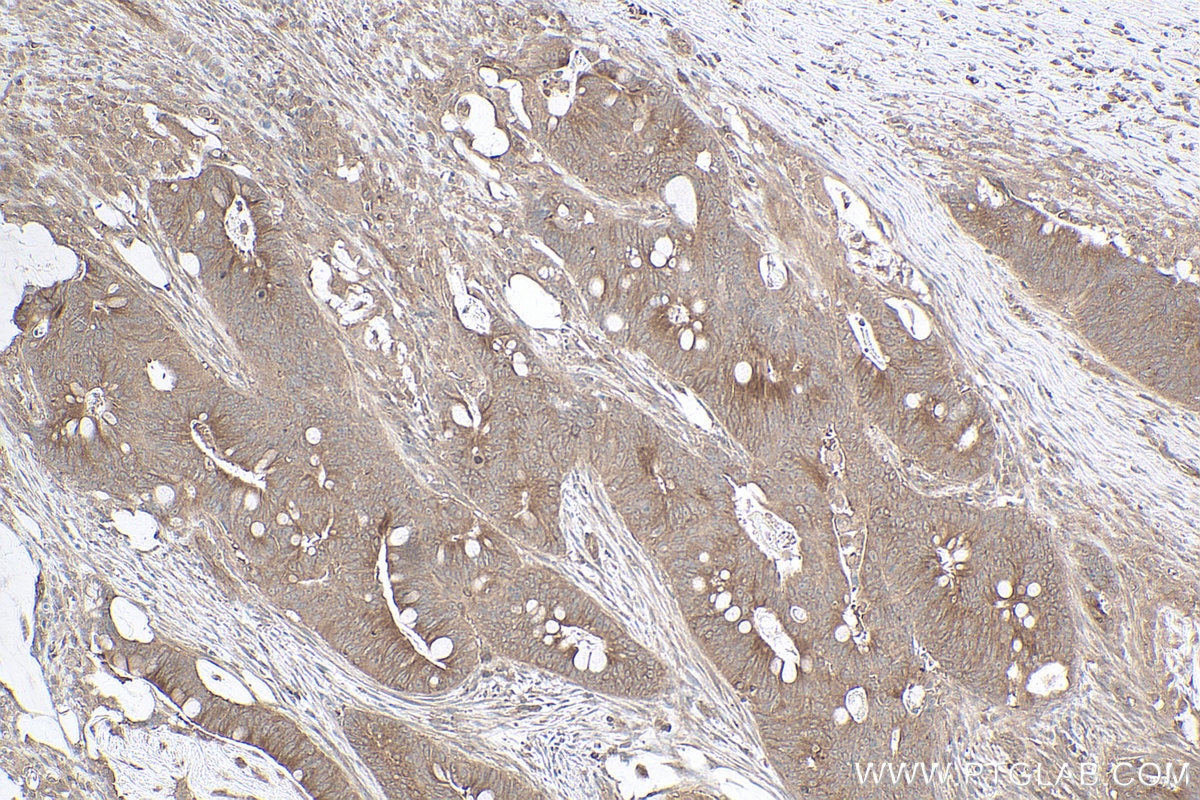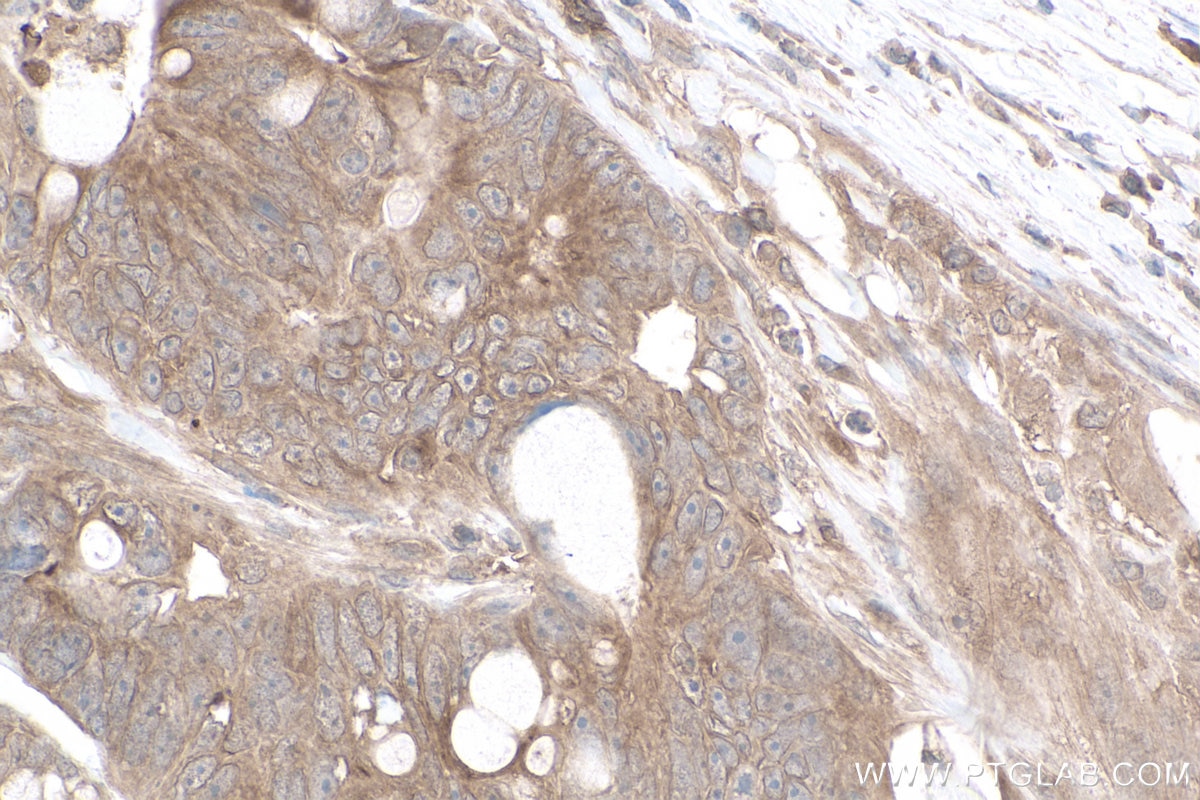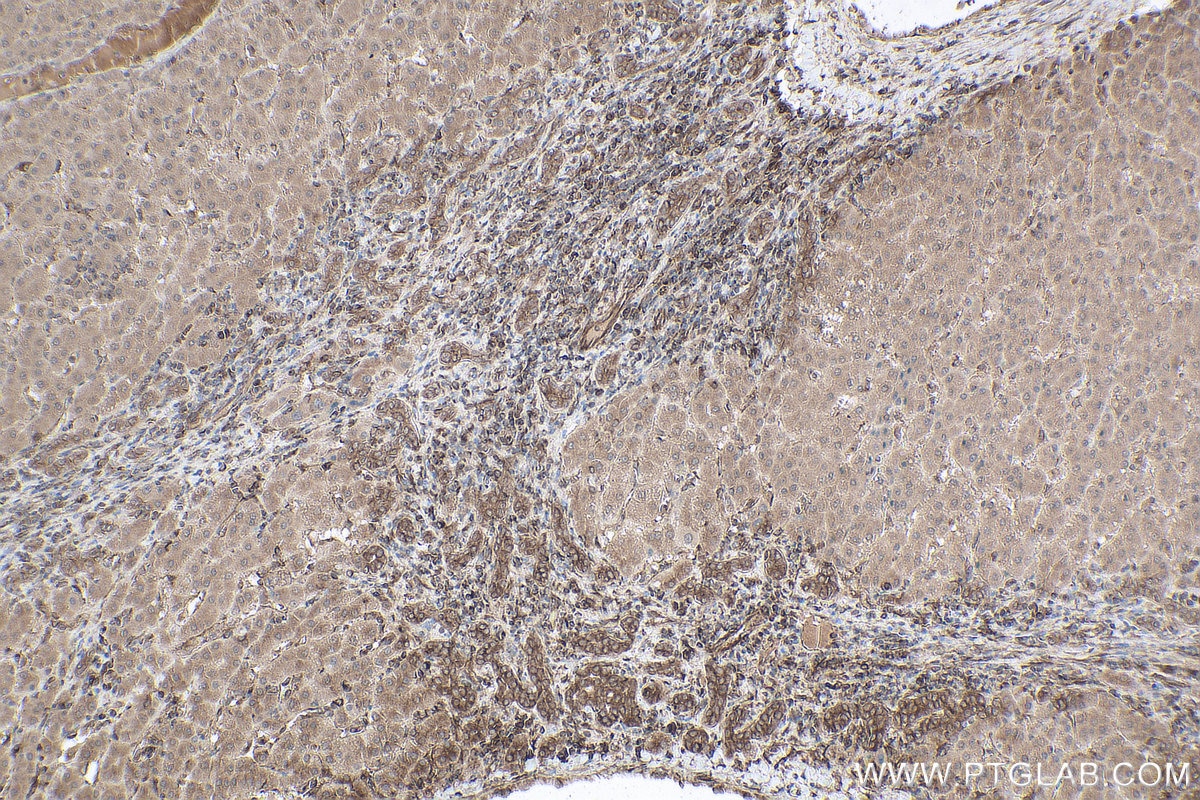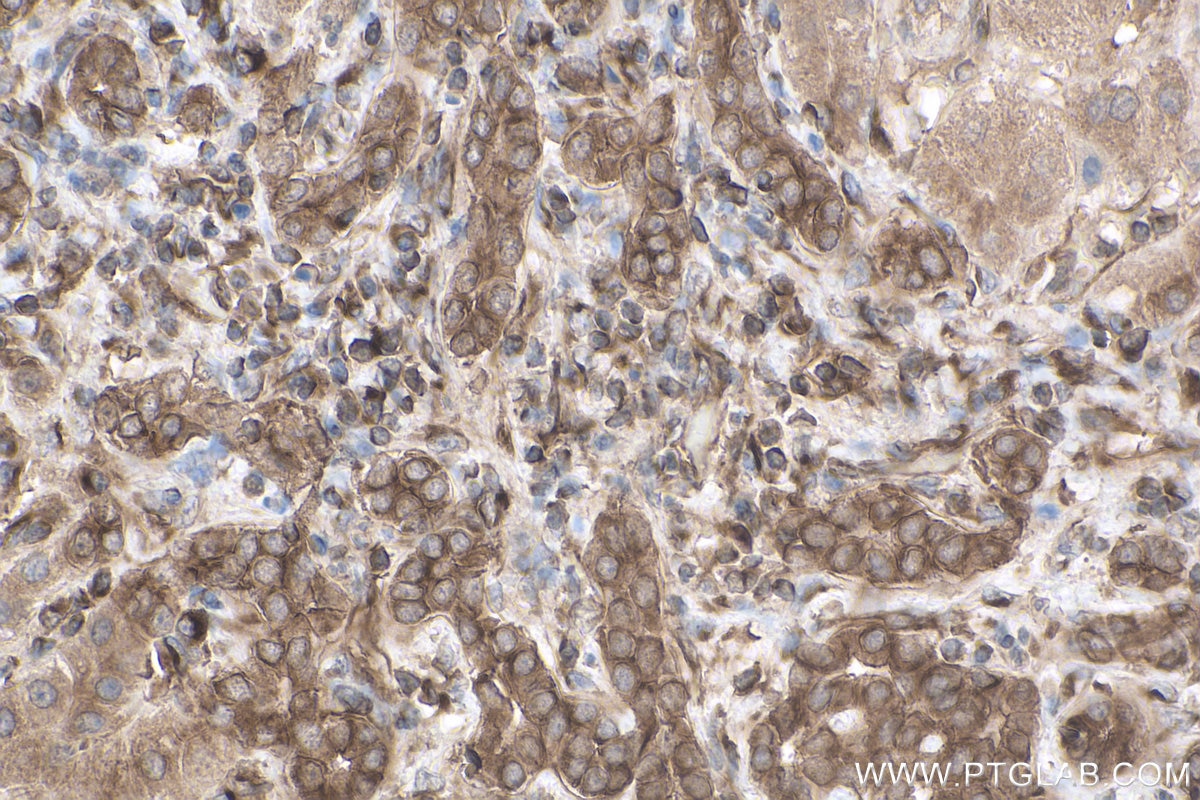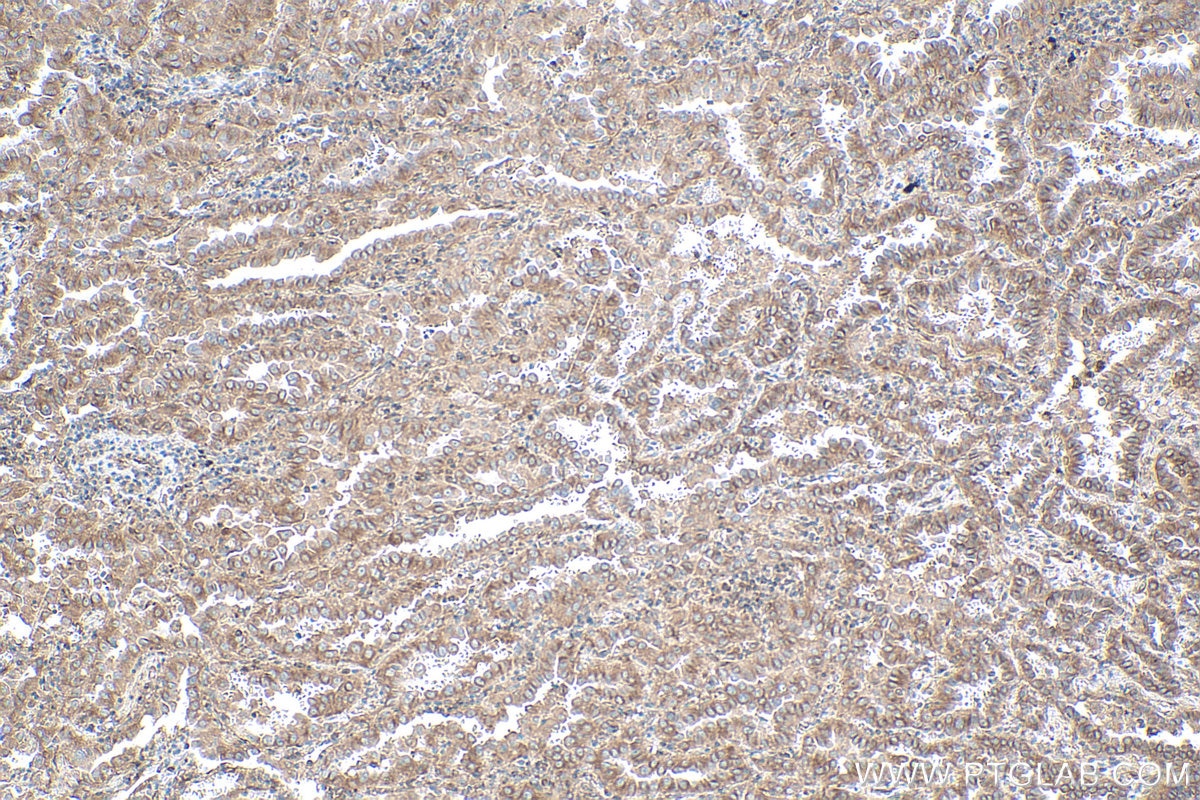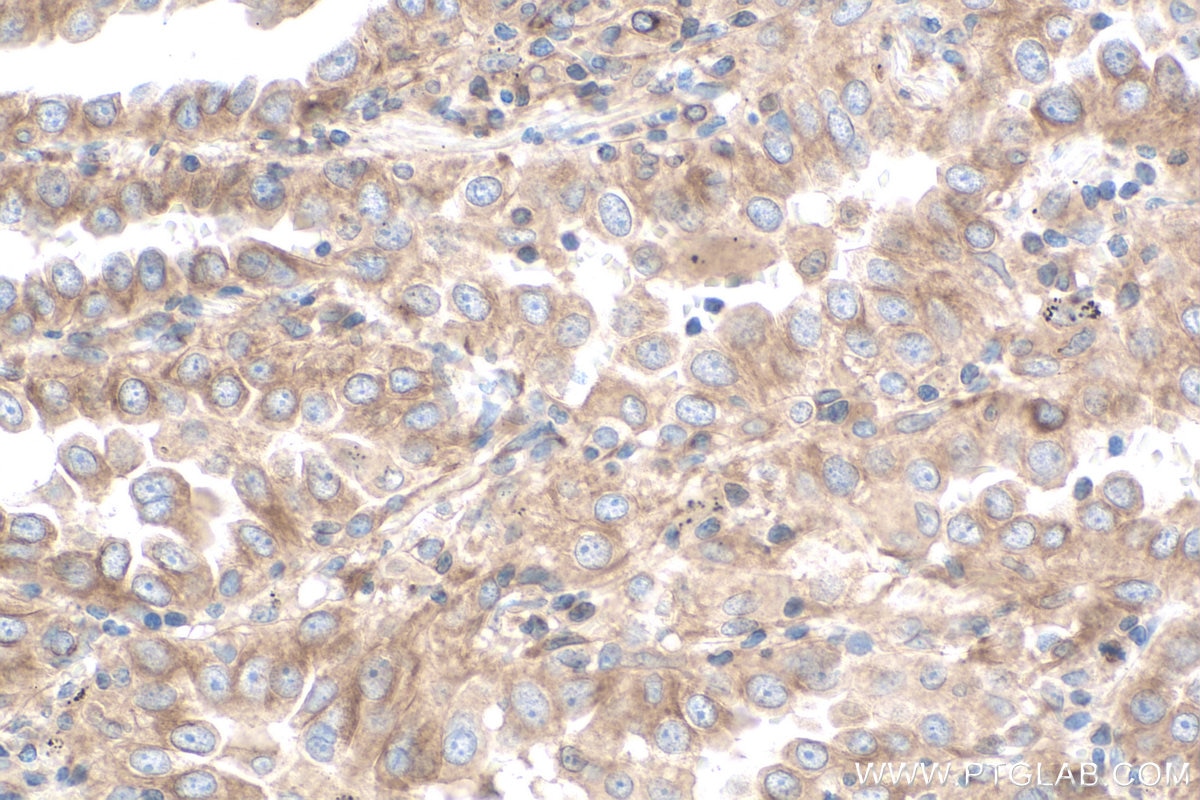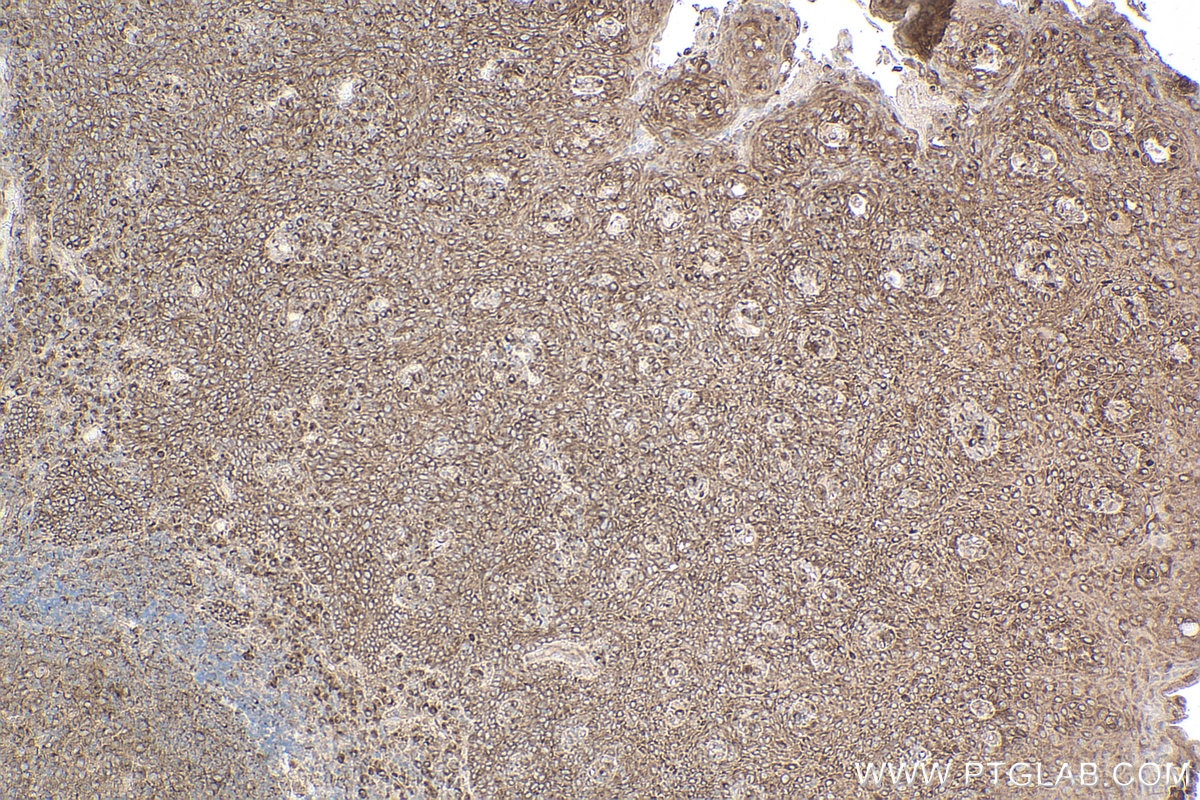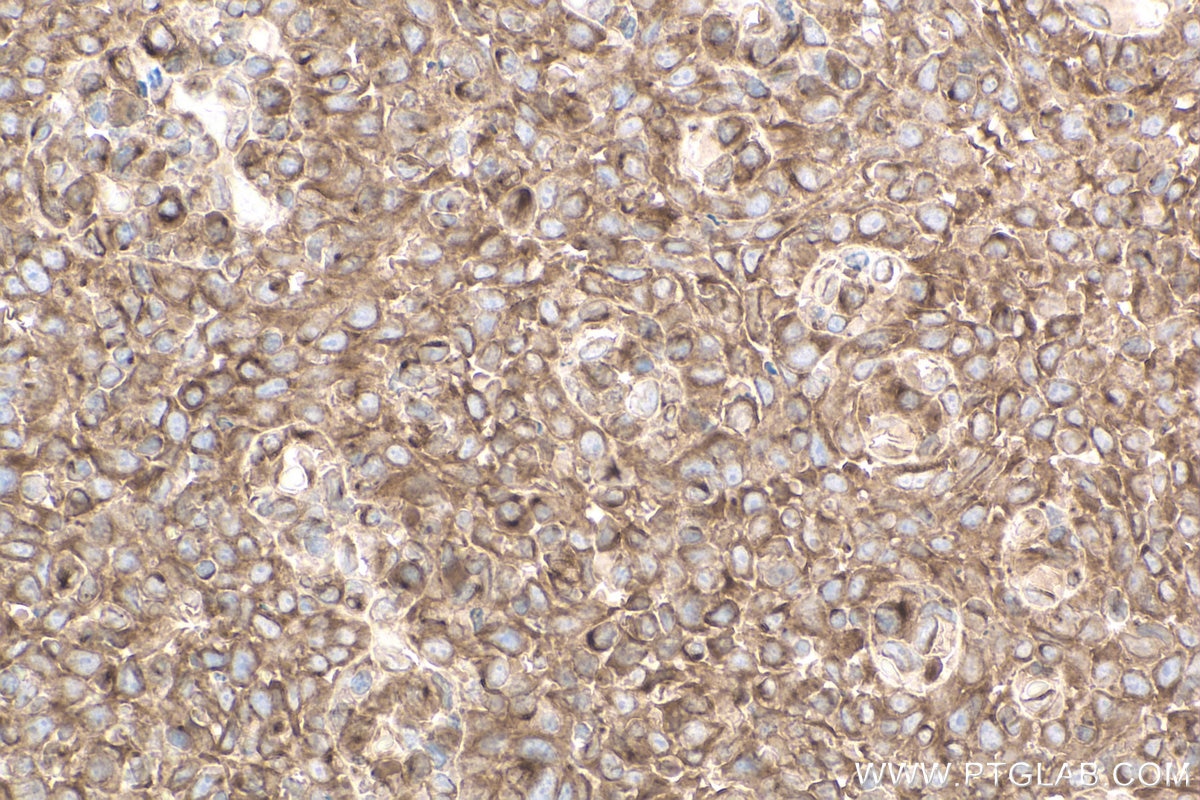gp130/IL6ST Monoklonaler Antikörper
gp130/IL6ST Monoklonal Antikörper für WB, IHC, ELISA
Wirt / Isotyp
Maus / IgG1
Getestete Reaktivität
human
Anwendung
WB, IHC, IF, IP, ELISA
Konjugation
Unkonjugiert
CloneNo.
1H7C5
Kat-Nr. : 67766-1-Ig
Synonyme
Geprüfte Anwendungen
| Erfolgreiche Detektion in WB | HepG2-Zellen, DU 145-Zellen, NCCIT-Zellen, PC-3-Zellen |
| Erfolgreiche Detektion in IHC | humanes Plazenta-Gewebe, humanes Kolonkarzinomgewebe, humanes Leberkarzinomgewebe, humanes Lungenkarzinomgewebe, humanes Tonsillitisgewebe Hinweis: Antigendemaskierung mit TE-Puffer pH 9,0 empfohlen. (*) Wahlweise kann die Antigendemaskierung auch mit Citratpuffer pH 6,0 erfolgen. |
Empfohlene Verdünnung
| Anwendung | Verdünnung |
|---|---|
| Western Blot (WB) | WB : 1:1000-1:4000 |
| Immunhistochemie (IHC) | IHC : 1:500-1:2000 |
| It is recommended that this reagent should be titrated in each testing system to obtain optimal results. | |
| Sample-dependent, check data in validation data gallery | |
Veröffentlichte Anwendungen
| WB | See 2 publications below |
| IHC | See 1 publications below |
| IF | See 1 publications below |
| IP | See 1 publications below |
Produktinformation
67766-1-Ig bindet in WB, IHC, IF, IP, ELISA gp130/IL6ST und zeigt Reaktivität mit human
| Getestete Reaktivität | human |
| In Publikationen genannte Reaktivität | human |
| Wirt / Isotyp | Maus / IgG1 |
| Klonalität | Monoklonal |
| Typ | Antikörper |
| Immunogen | gp130/IL6ST fusion protein Ag28808 |
| Vollständiger Name | interleukin 6 signal transducer (gp130, oncostatin M receptor) |
| Berechnetes Molekulargewicht | 104 kDa |
| Beobachtetes Molekulargewicht | 130-140 kDa |
| GenBank-Zugangsnummer | NM_002184 |
| Gene symbol | IL6ST |
| Gene ID (NCBI) | 3572 |
| Konjugation | Unkonjugiert |
| Form | Liquid |
| Reinigungsmethode | Protein-G-Reinigung |
| Lagerungspuffer | PBS with 0.02% sodium azide and 50% glycerol |
| Lagerungsbedingungen | Bei -20°C lagern. Nach dem Versand ein Jahr lang stabil Aliquotieren ist bei -20oC Lagerung nicht notwendig. 20ul Größen enthalten 0,1% BSA. |
Hintergrundinformationen
Glycoprotein 130 (gp130, also known as IL6ST, CD130 or IL6-beta) is a ubiquitously expressed, signal-transducing receptor that serves as the signal transduction unit for IL-6 family of cytokines, including IL-6, IL-11, IL-27, leukemia inhibitory factor (LIF), OSM, ciliary neurotrophic factor (CNTF), cardiotrophin 1 (CT-1), and cardiotrophin-like cytokine (CLC) (PMID: 9143707; 20610800). These cytokines signal through the gp130/Jak/STAT pathway (PMID: 9716487). Binding of IL-6 to IL-6R induces gp130 homodimerization and formation of a high-affinity receptor complex, which activates Jaks. That causes phosphorylation of gp130 tyrosine residues which in turn activates STAT3. gp130 is a type I transmembrane protein, and can also exist as a soluble form (sgp130). sgp130 binds to sIL-6R/IL-6 complexes and prevents their interactions with membrane-anchored gp130 on target cells (PMID: 9815830).
Protokolle
| PRODUKTSPEZIFISCHE PROTOKOLLE | |
|---|---|
| WB protocol for gp130/IL6ST antibody 67766-1-Ig | Protokoll herunterladen |
| IHC protocol for gp130/IL6ST antibody 67766-1-Ig | Protokoll herunterladenl |
| STANDARD-PROTOKOLLE | |
|---|---|
| Klicken Sie hier, um unsere Standardprotokolle anzuzeigen |
Publikationen
| Species | Application | Title |
|---|---|---|
Cell Prolif Increased SPON1 promotes pancreatic ductal adenocarcinoma progression by enhancing IL-6 trans-signalling. | ||
PLoS One Hypomethylation of IL6ST promotes development of endometriosis by activating JAK2/STAT3 signaling pathway | ||
Dev Cell STAT3-controlled CHI3L1/SPP1 positive feedback loop demonstrates the spatial heterogeneity and immune characteristics of glioblastoma | ||
Cancer Med Construction of a prognostic model for triple-negative breast cancer based on immune-related genes, and associations between the tumor immune microenvironment and immunological therapy |
Rezensionen
The reviews below have been submitted by verified Proteintech customers who received an incentive for providing their feedback.
FH Jimmy (Verified Customer) (05-28-2025) | Nice results for western blot application
|
